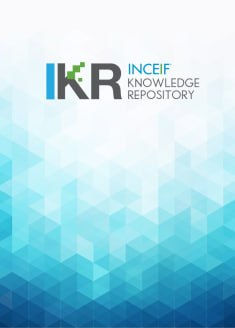
Browse by Topic "Islamic capital markets::Sukuk"
Results Per Page
Sort Options
- PublicationDaily traders' and institutional investors' wealth effect upon sukuk and conventional bond announcements: a case study of Malaysian firms using event-study methodology and wavelet analysisMohamed Hisham Hanifa; Abul Mansur Mohammed Masih; Obiyathulla Ismath Bacha (Bursa Malaysia & Malaysian Finance Association, 2014)
The last decade has witnessed a rapid expansion of Islamic financial instruments with a notable proliferation of Islamic investment certificates called sukuk. In spite of the expansion, research to appraise their growth implications remains limited. This paper investigated the structural differences within sukuk and conventional and their implications on investor return reactions. It also looked at the investors' different decision making time horizon dimensions in response to the respective debt security's announcement. Our sample consisted of 158 conventional bonds and 129 sukuk issuers between 2000 and 2013. Event-study methodology and wavelet analysis were used resulting in three major findings. Firstly, market investors perceived sukuk and conventional bonds as different financial instruments. Variations in investor reactions persisted when each sub-category of sukuk and conventional bond were examined separately. Lastly, firm value and shareholder wealth were affected in different ways upon the issuance announcement of of a specific sukuk or conventional bond. Specifically, the equity-like features within convertible bonds and partnership-based sukuk negated institutional investors' wealth, but were due to different 'dilution' arguments. Sukuk created unique wealth effects for corporate issuers, day traders and institutional investors in comparison with conventional bonds.
- PublicationDeterminants of sukuk and conventional debt security offers in the context of trade-off and pecking-order theoriesMohamed Hisham Hanifa; Abul Mansur Mohammed Masih; Obiyathulla Ismath Bacha (INCEIF, 2015)
Sukuk is dominating the Malaysian capital market with strong support from the government, mega-conglomerates and firms. As an important source of firms' financing, sukuk is increasingly catching up with existing conventional debt in terms of transaction volume and the number of deals. In spite of the rising interest among issuers in sukuk offers, research to appraise firm's issuance motives and the subsequent effects on shareholders' wealth upon sukuk and conventional bond announcement remains limited. Hence, through this initial study, firstly, we examine the association of firm specific characteristics with the respective debt security principles offers. Secondly, we also investigate the impact of each debt security offer announcement on issuer overall shareholders’ wealth effects. To address the first issue, we employed the dynamic GMM (both difference and system) analyses for testing the “partial adjustment model” with a view to investigating whether firms maintain an optimal target debt ratio when issuing each debt security principles, consistent with the trade-off theory key predictions. We also used the same model to examine the firm’s specific determinants of target debt ratio in an integrated approach. To address the second issue, we adopt both, “event-study” methodology and “wavelet” analysis. The aim is to examine the true dynamics of relationship between the debt security announcement and the shareholders’ wealth effects, given multi-horizon nature of investors.
- PublicationEmpirical evidence of risk shifting in bonds and debt-based sukuk: the case of Malaysian corporationsSiti Raihana Hamzah; Abbas Mirakhor; Nurhafiza Abdul Kader Malim; Obiyathulla Ismath Bacha (Emerald Publishing Limited, 2018)
The purpose of this paper is to examine the extent of risk shifting behavior in bonds and sukuk. The examination is significant, as economists and scholars identify risk shifting as the primary cause of the global financial crisis. Yet, the dangers of this debt-financing feature are largely ignored - one needs to only witness the record growth of global debt even after the global financial crisis. To identify the signs of risk shifting existence in the corporations, this paper compares each corporation's operating risk before and after issuing debt. Operating risk or risk of a firm's activities is measured using the volatility of the operating earnings or coefficient variation of earning before interest, tax, depreciation and amortization (EBITDA). Using EBITDA as the variable offers one distinct advantage to using asset volatility as previous research has - EBITDA can be extracted directly from firms' accounting data and is not model-specific.
Abstract View
2673667
View & Download
195436
